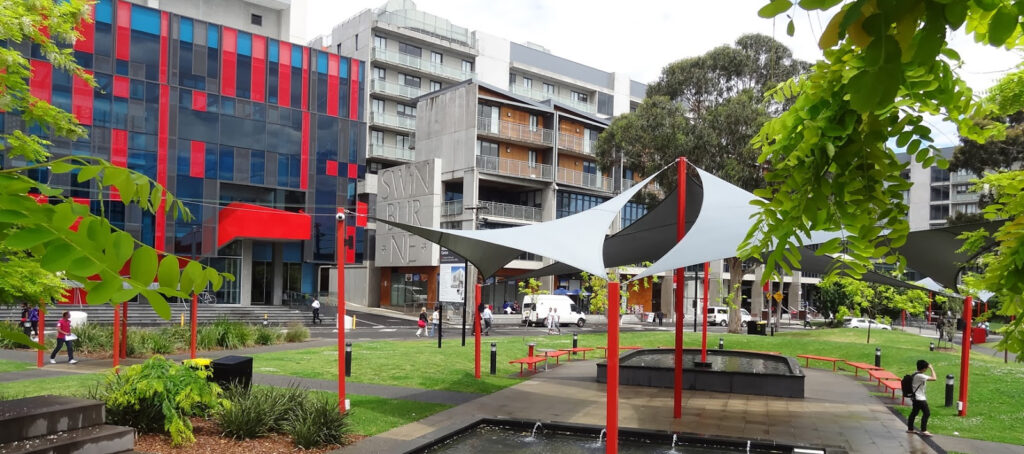Swinburne University of Technology in Melbourne has over 30,000 enrolled students and a combined staff of 9,000. In February 2022, the university found itself facing a critical juncture. Its on-premises IT infrastructure relied on several pieces of hardware that were reaching their end of life, representing an operational risk, but also an exciting opportunity.
“Cloud migration became a high priority to achieve the kind of cybersecurity maturity we wanted,” says Phil Roe, former Chief Information Officer at Swinburne. “There were also other important drivers like service quality, reliability, and our ability to optimise cost and resources.”
Accordingly, the institution embarked on a cloud transformation journey to revamp its IT landscape in a way that would establish a benchmark in global best practices for digital enablement. The move towards Azure combined a search for scalability and reliability with Swinburne’s vision to be a leading digitally connected and technology enabled institution.
Charting the course for cloud migration
Swinburne’s vast app portfolio included 3,000 workloads that were integral to daily operations. The IT team also faced a critical deadline of October 2023 for migration to overcome the systems’ end-of-life date.
As a first step, the team conducted a rigorous assessment of available cloud platforms and concluded that Azure was best suited to the university’s architectural standards and aspirations. The team also reviewed its app portfolio.
“Within our app portfolio, we didn’t know which were valid and which we wanted to retain and migrate to the cloud,” says Damith Ratnayake, Director of Enterprise Infrastructure at Swinburne University.
That meant the team’s initial task was to catalogue and assess Swinburne’s app portfolio to determine how business-critical and data-sensitive each app was. This foundational work proved invaluable. The IT team gained clearer visibility into its data centre, which meant it could streamline the app portfolio down from 3,000 workloads to an estimated 1,600 workloads, out of which an estimated 500 were targeted for migrations to Azure.
This consolidation was a strategic win, with the university decommissioning many outdated applications and a significant number of servers. This not only put the IT team in a stronger position to make a smooth transition to the cloud but also paved the way for significant cost savings and operational efficiencies.
Microsoft Unified Support played a crucial role in this preparatory work by providing a cost optimisation strategy that offered predictability and confidence. This was vital in helping the IT team make the business case for the migration and secure support from Swinburne’s senior leadership.
Strategic partnership and support from Microsoft
Swinburne also engaged Microsoft’s support to utilise the Azure Migration Factory, which helped accelerate the migration process. The Azure Migration Factory enabled the university to demonstrate to stakeholders that the migration could be swift, cost-efficient and minimally disruptive to business.
Microsoft also supported Swinburne through the Azure FastTrack program, which provided guidance on best practices for architecture and cloud adoption. Microsoft’s support gave the university’s IT team confidence and guidance, expediting the migration timeline.
During an interim period usually prone to stagnation, the Microsoft Unified Support team assessed the university’s landing zone to ensure it was primed for the migration.
“That landing zone remediation work happened during what would typically have been a dead time while Swinburne was going to market to select a partner,” says Praveen Senadheera, Senior Azure Specialist at Microsoft. “By the time they onboarded a partner, the landing zone was ready for them to begin migrating test loads immediately.”
Two dedicated squads orchestrated the migration process. The first focused on running the Migration Factory, while the other oversaw the RFP process and partner integration. Swinburne’s partner, Logicalis, handled the more complex workloads, as the university was able to migrate many workloads with Microsoft’s support.
The university’s IT team also built redudant express routes between its on-premises environment and Azure, utilising private links to Microsoft data centres to ensure data security during the migration process.
Unlocking a digitally enabled future with cloud
The collaboration between Swinburne, Microsoft, and Logicalis was a testament to teamwork and technological expertise. “Success for us was managing the migration securely and within the ambitious timeline. We managed to lift and shift 60 apps with little to no disruption to business operations,” says Roe. Even as critical business workloads were transitioned, the university experienced no business outages.
Now, Swinburne is capitalising on Azure’s tangible benefits, including more reliable services and enhanced network stability. The engineering teams can refocus their resources now that they no longer need to maintain legacy systems, allowing them to tackle high-value projects and innovate in more areas.
The university received support from Microsoft’s Enterprise Skilling Initiative to ensure staff were trained and ready for the new cloud environment, boosting employee engagement and retention by investing in their skills development.
The next phase of Swinburne’s cloud journey is focused on optimising the migrated workloads and harnessing the full potential of the Azure environment. The university plans to implement DevOps practices and explore the capabilities of Azure Data Lakes.
“We’ve now got a key foundational piece in place by being more actively involved in having a cloud environment, which we can leverage in all sorts of directions, from data warehousing and data analytics to more hybrid arrangements,” says Roe.
The partnership with Microsoft is set to deepen as Swinburne continues to innovate and expand its digital capabilities.


